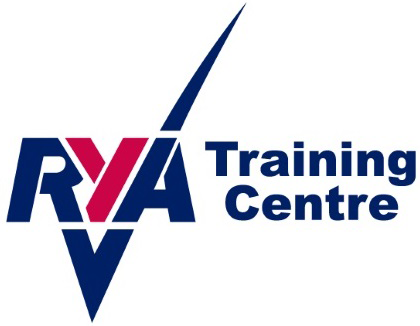Whose responsibility is it to get out of the way? Who would be culpable if a collision, or even a near miss, occurred? Who should do what at what point to prevent a collision from occurring?

No vessel has absolute ‘right of way’ under the COLREGS – there are ‘give way’ vessels and ‘stand on’ vessels but there are times when a stand on vessel is obliged to take avoiding action…anybody using any sort of watercraft as a means of transport – whether motor or sail – should familiarise themselves with COLREGS.
The International Regulations for Preventing Collisions at Sea, more commonly known as the COLREGS, are quite simply, the ‘rules of the road’ for ships and other vessels at sea; they set out the conduct of vessels in any condition of visibility, in sight of each other and in restricted visibility. The rules were introduced to make it clear when you are the stand on vessel, when you are the give way vessel and what the correct action to take is when in close quarters with other vessels to avoid a collision.
A commonly held misconception concerning the COLREGS is that it is a guidance document, something to help skippers understand who has ‘right of way’ in a potential collision situation. Wrong! They are rules and you have to comply with the lot!
Failure to comply with the COLREGS – not necessarily a collision but simply a breach of the rules such as motoring the wrong way in a separation lane – is a criminal offence that, depending on its severity, carries a maximum penalty of two years in prison and/or an unlimited fine.
Rule one of the COLREGS states, ‘These rules shall apply to all vessels upon the high seas and in all waters connected therewith navigable by seagoing vessels.’
Pleading ignorance in any prosecution case is not going to wash.
“There are 38 separate Rules within the COLREGS”, explains Gus Lewis, RYA Head of Legal and Government Affairs, “although some of them are clearly aimed at large commercial vessels, in principle they apply to all vessels. For any set of rules to be effective in avoiding collisions, all vessels need to be following the same rules.”
COLREGS were adopted as a convention of the International Maritime Organisation in 1972 but they have been amended several times since. The Rules are divided into five parts A-E covering:
- General Rules (A)
- Steering and Sailing (B)
- Lights and Shapes (C)
- Sound and Light (D)
- Exemptions (E)
There are also four Annexes which are often ignored. These cover the positioning and technical details of lights and shapes, additional signals for fishing vessels fishing in close proximity, technical details of sound signal appliances and distress signals.
Although all the COLREGS are important, the steering and sailing rules set out in Part B (Rules 4-19) are the ones likely to be most significant to small boats operating in daylight, with good weather or restricted visibility. Part B covers the following
- Look out
- Safe speed
- Risk of collision
- Action to avoid a collision
- Narrow channels
- Traffic separation schemes
- Approaching sailing vessels
- Overtaking
- Head on situations
- Crossing situations
- Action by give way vessel
- Action by stand on vessel
- Responsibilities between vessels
- Conduct of vessels in restricted visibility
Some of these are general good behaviour rules while others are very specific, prescribed obligations.
Top tips for learning the COLREGS

- Do a little bit often – Cockpit cards are great as they are visual and can be picked at random
- Remember the priority between vessels: Power < Sail < Fishing < Constrained by Draught < Not under Command and Restricted in Ability to Manoeuvre
- When travelling at speed the closing time from seeing another vessel and the potential risk of collision may be shorter than you think – knowing the rules without thinking about them crucial. For example, two boats travelling at 10 knots close at one mile every three minutes. The distance to the horizon for most small powerboats will be a little over two miles away, that’s only six minutes from seeing to colliding with them!
- Lights and sound signals mostly have a logical build-up / progression. Learning the build makes it easier to decipher the over picture of what you are seeing.
The RYA Day Skipper ONLINE Theory course provides the first comprehensive introduction to COLREGS or if you are looking for a more basic instruction to learn them then the Essential Navigation and Seamanship course is a great supporting course for those new to boating, or as a refresher course, and is available online.
The RYA International Regulations for Preventing Collisions at Sea – 2nd Edition is essential for anyone taking courses within the RYA Yachtmaster scheme, especially those who would like to take charge of a vessel either for commercial or recreational use. Chapters include:
- Assessing the Risk
- Who Gives Way?
- Restricted visibility
- Lights and Shapes
- Sound and Light Signals
Building on the already popular 1st edition, this title has been restructured to lead customers through the regulations by rule order, split into themes (i.e. restricted visibility) so that the content can be easily navigated whether the book is being used as a learning tool, reference or teaching aid.
